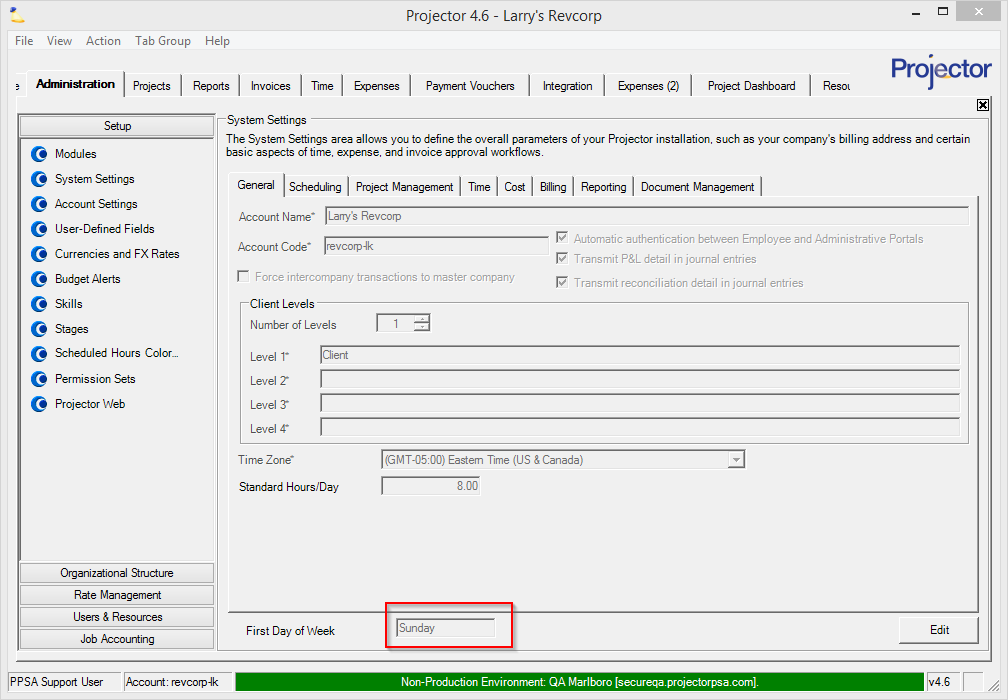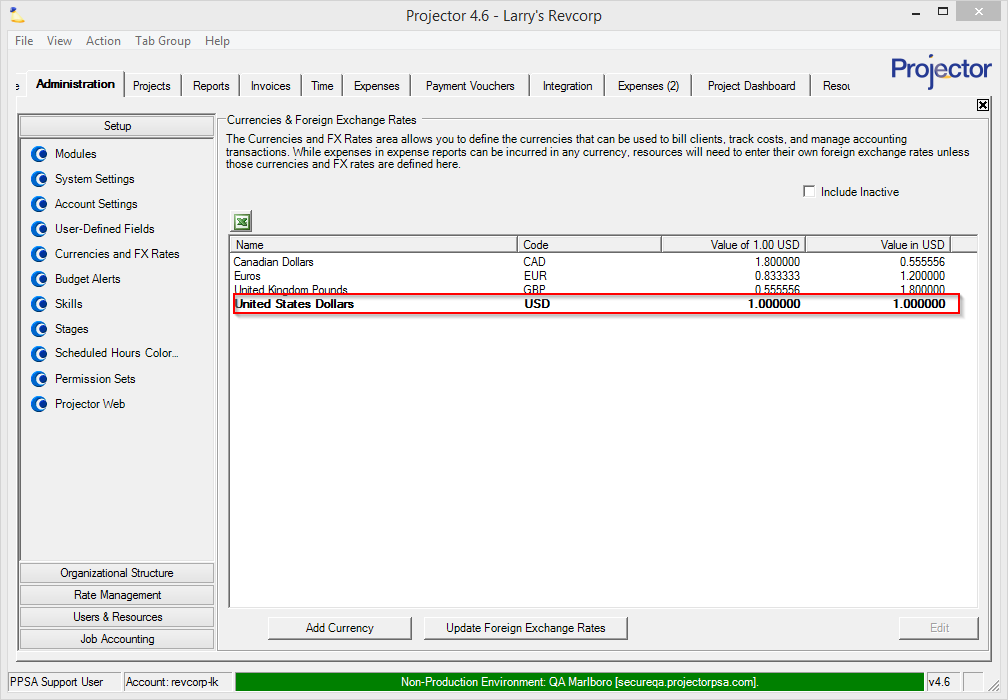Introduction (CQ)
Configuration is performed on the Administration tab of the management portal. The Administration tab is composed of sections, and each section is composed of several configuration pages. The pages are either identified by the section and page (e.g., Setup | Account Settings) or by the page alone (e.g., Account Settings). An image of the Administration tab is shown below:
This configuration guide is designed to be followed in order by section. This will help you configure Projector in an order that works, although it is not the only reasonable order. The guide is not intended to be comprehensive. If you need additional screen-specific help, press F1 while in the management portal. Also, no attempt has been made to describe the setup of the accounting interface or the setup of project workspaces.
Before You Begin
- Verify that your company's main currency is bolded (Setup | Currencies and FX Rates).
- Verify that the starting day of the week is correct. This is the day of the week on which time sheets will begin (Setup | System Settings).
If either of the above are incorrect then contact Projector PSA support to correct them before you proceed.
Preparing for an Implementation Guided By Projector's Implementation Consulting Team
Our customers often ask how they can do advance preparation for a Projector implementation. We prefer an iterative approach to implementation. The ultimate configuration may differ from what was originally conceived. So it may be unproductive to do a lot of detailed advance preparation. But it may help to prepare a few lists in advance. Here are some suggestions:
- List all currencies used for billing and used as ledger currencies.
- List the entities for which there is a ledger. This is usually the same as a list of countries in which your organization operates. It will become the list of companies in Projector.
- List all departments and titles for billable resources.
- Create a list of standard hourly billing rates by title (if such a concept applies). If you have multiple sets of commonly used rates then create several lists. Each list will become a billing rate card.
- Create a list of hourly cost rates by title. Include only direct costs (salary and benefits) in the hourly rate. If you have regions with different cost rates then create one list per region. Each list will become a resource direct cost rate card.
- List all cost centers (or business units) that own projects.
- List all cost centers (or business units) that own resources.
- List all time off reasons (Vacation, Illness, Jury Duty, etc.) and put together a list of company holidays.
- List all expense types used in expense reports (Meals, Travel, etc.).
- List the stages in a project's life cycle (e.g, Lead, Opportunity, Delivery, Closed). These are not project methodology stages (e.g., Discover, Design, Develop, Deploy).
- List the locations of all offices with which you wish to associate resources and projects.
- Document how you compute utilization. For example, to compute utilization in a 40-hour work week that includes a company holiday and that has one vacation day for a specific resource, do you divide by 40 hours, by 32 hours, or by 24 hours?
- Gather a representative sample of invoice templates.
- Gather a representative sample of management reports.
- Gather an example of a Statement of Work that you would provide to your clients.
- If you plan to do an accounting integration, gather a copy of your enumerated chart of accounts.
Ask your salesperson or implementation consultant for a copy of the latest data load spreadsheet. Much of the above information can be collected on that spreadsheet.

